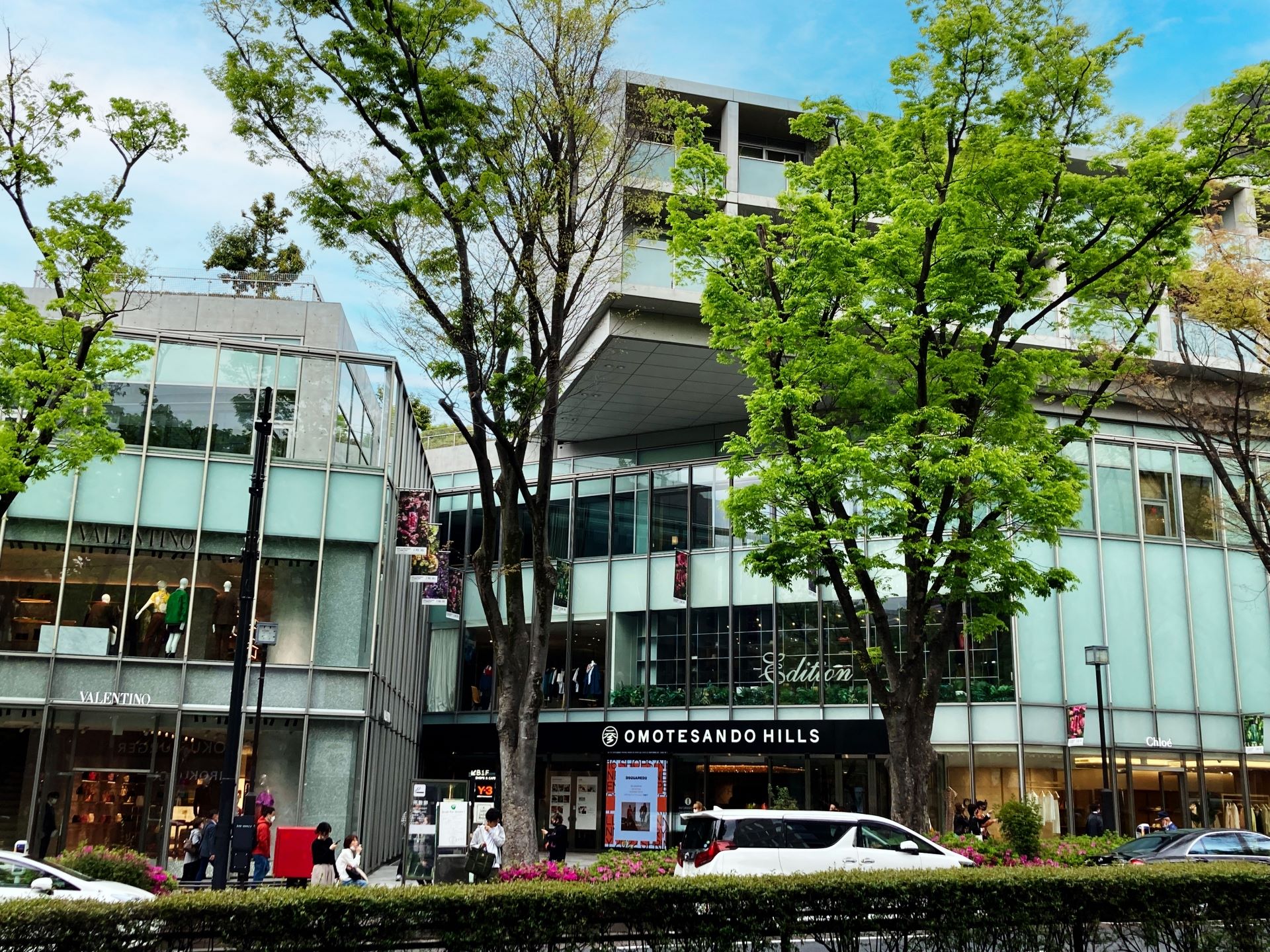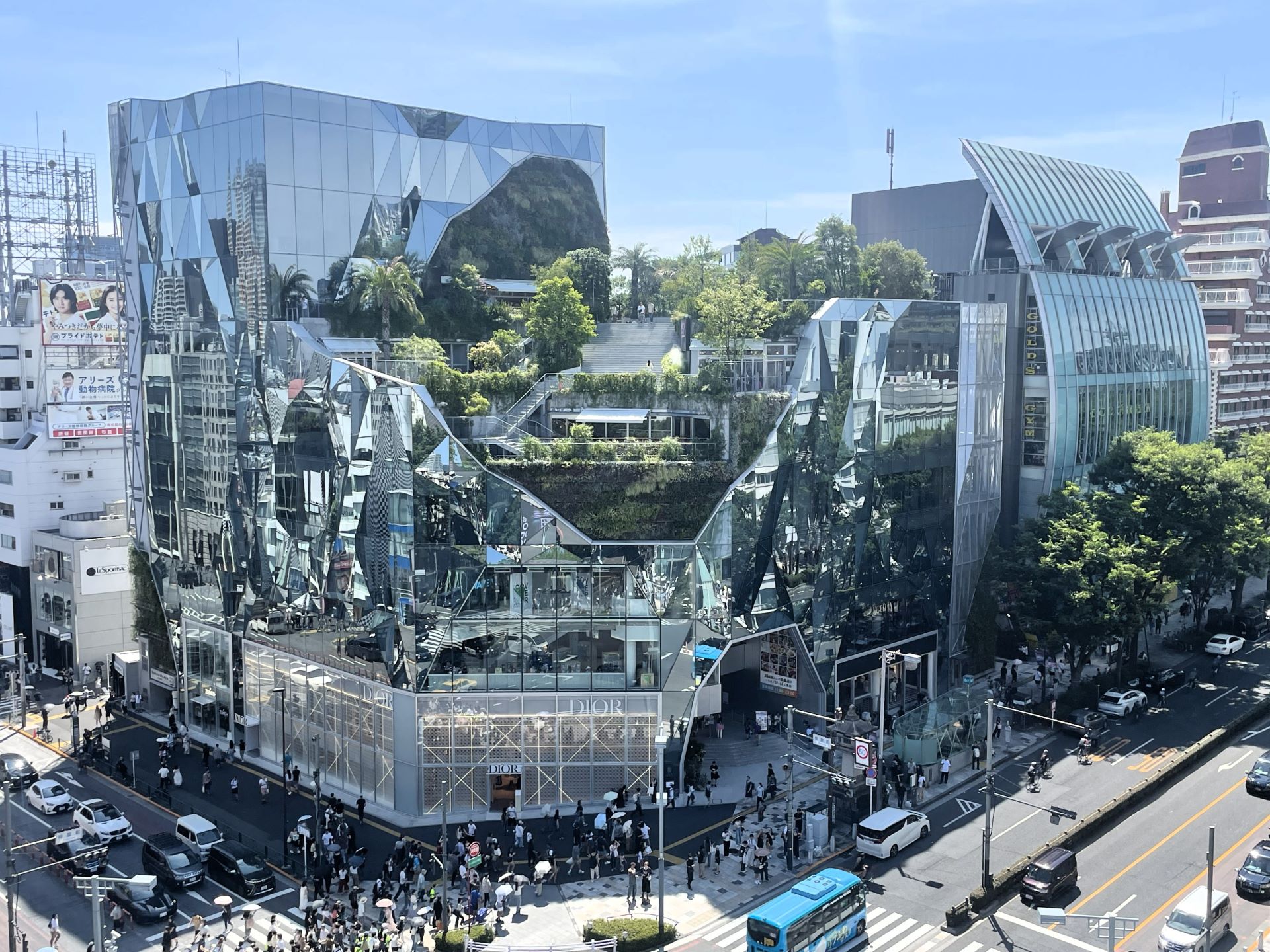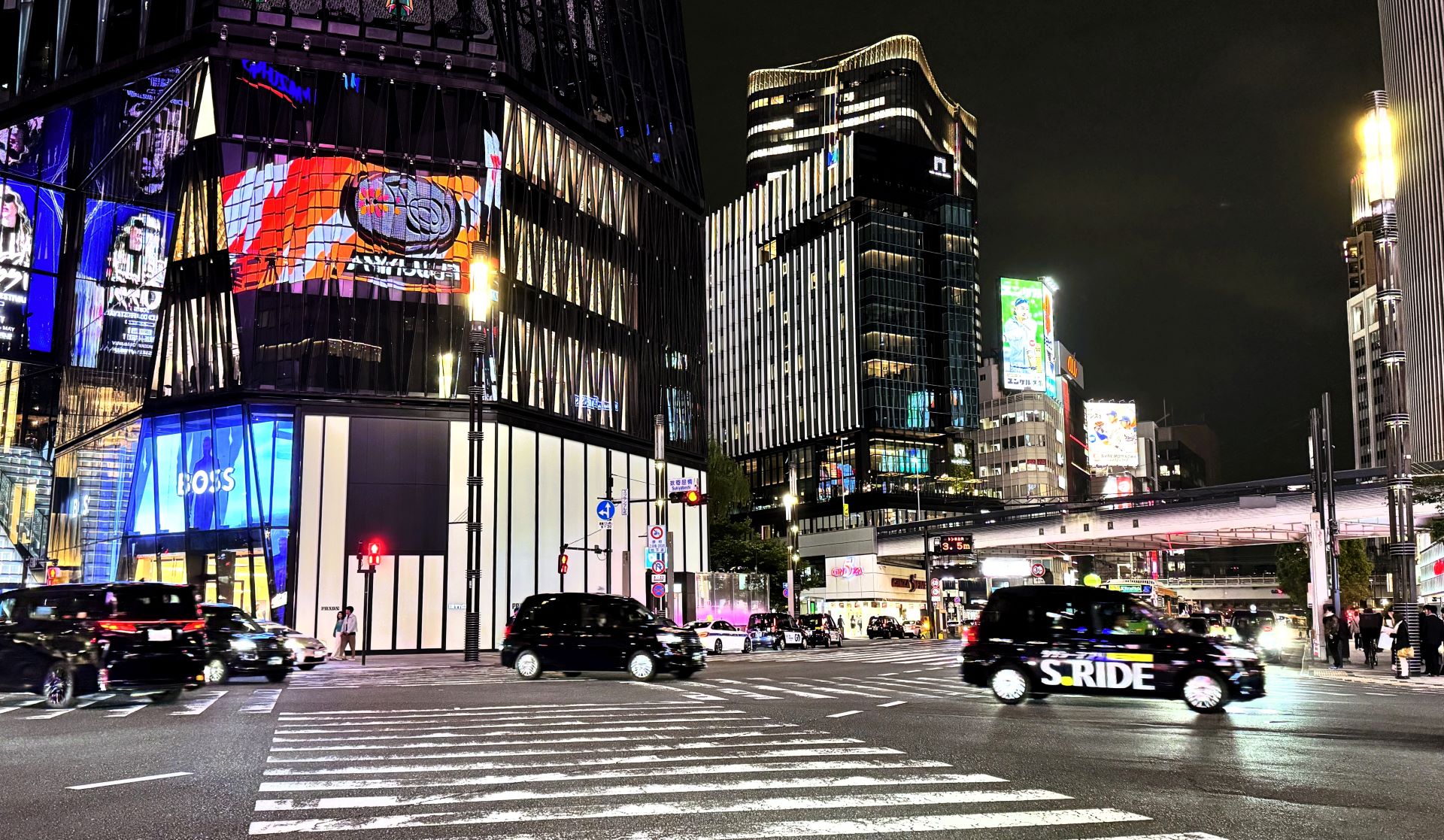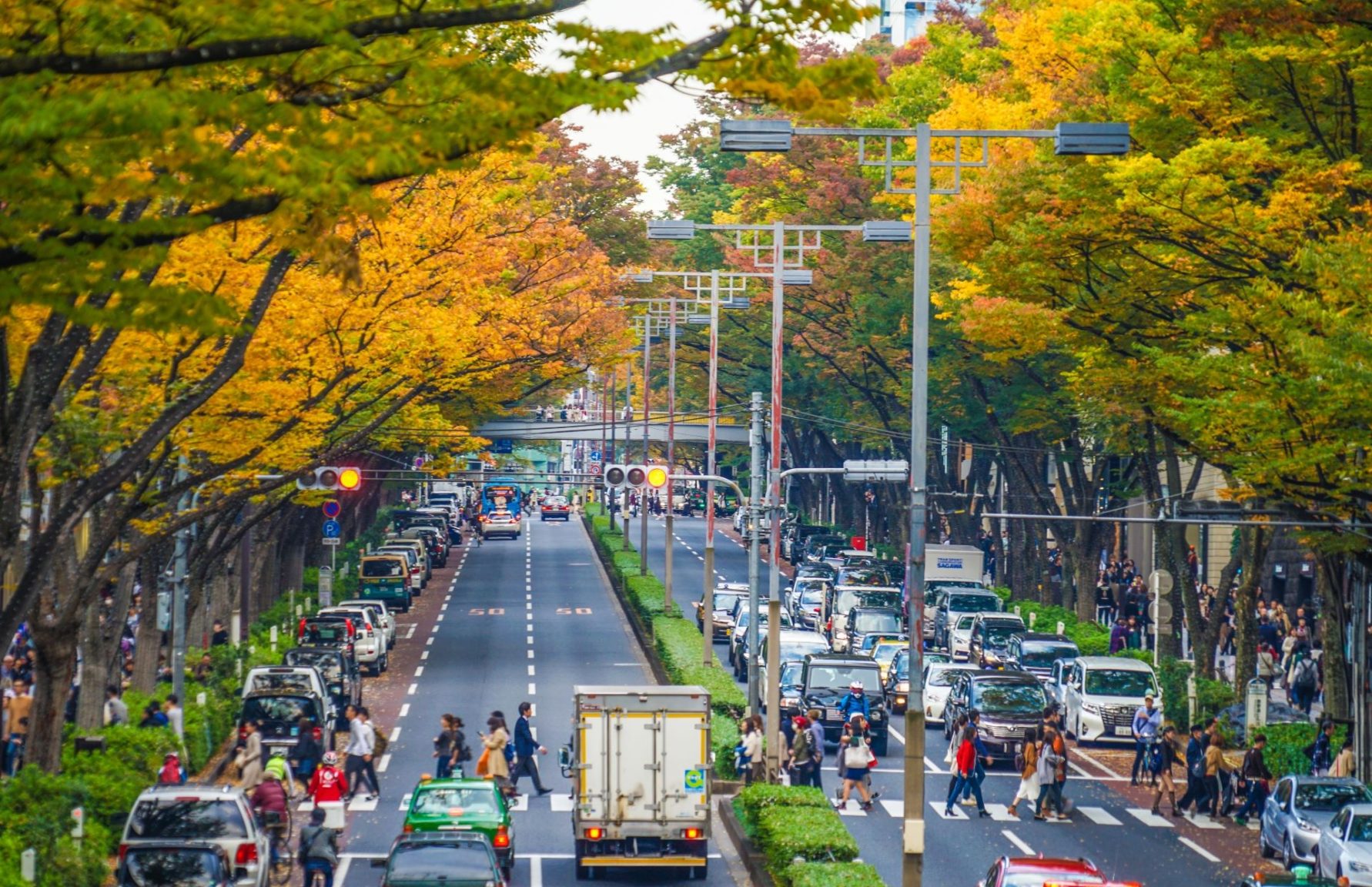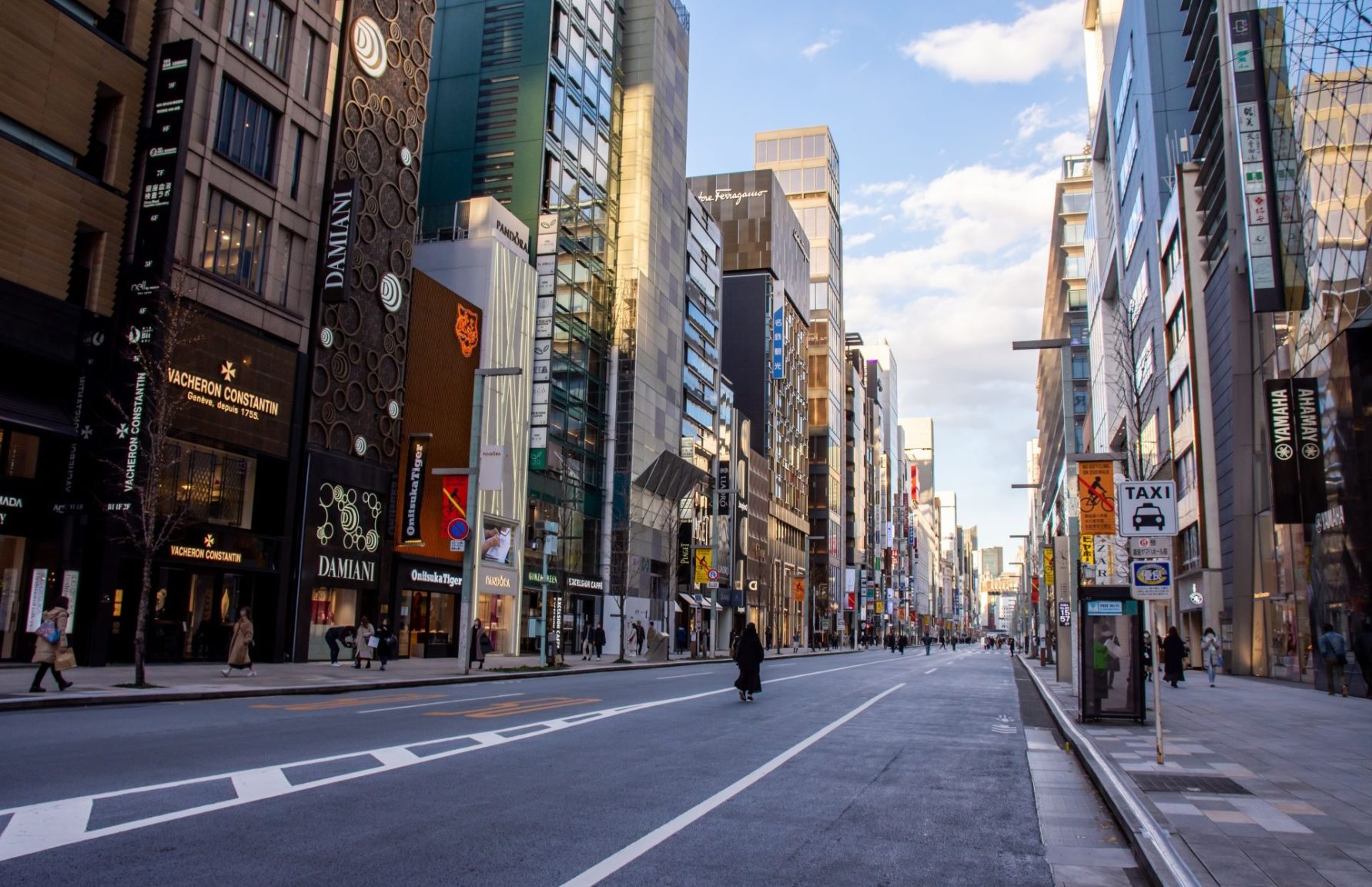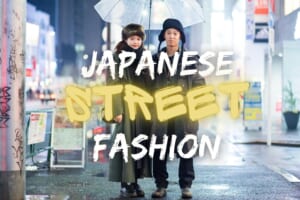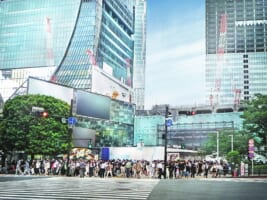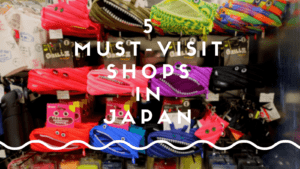Ginza vs Omotesando: Which is Better for Shopping and Style in Tokyo?
Tokyo’s Best Shopping Districts Compared
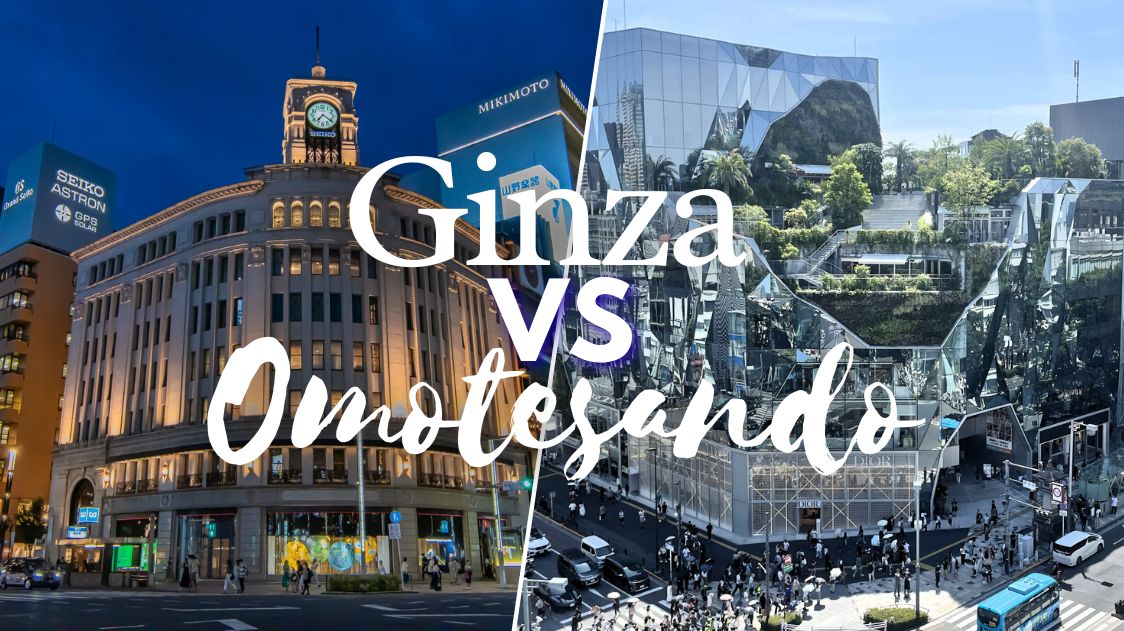
Planning a shopping day in Tokyo but only have time for one district? You’re not alone. Ginza and Omotesando are two of the city’s most iconic fashion hubs, each with a distinct personality, style, and pace. Choosing between them is as much about where to spend yen as it is about finding the spot that matches your taste, energy, and travel goals.
This guide is for travelers who care about fashion, design, and detail, regardless of being a first-time visitor, a style-savvy tourist, or just trying to get the most out of a tight itinerary. So hopefully, if you’re short on time and long on curiosity, we’ll do our best to guide you to the right place.
This is a comparison of shopping areas. For a general overview of the Ginza and Harajuku areas, be sure to check our All‑in‑One Guide to Ginza & All-in-One Guide to Harajuku!
Ginza vs Omotesando at a Glance
For a quick comparison, this breakdown makes it easy to match each district with your shopping priorities and personal vibe:
| Category | Ginza | Omotesando |
| Fashion Focus | High-end luxury (Chanel, Hermès, Louis Vuitton) | Streetwear, designer casual, indie (BAPE, Comme des Garçons) |
| Price Range | $$$$ – Primarily luxury and premium brands | $$–$$$$ – Wide range from high fashion to accessible labels |
| Atmosphere | Elegant, polished, quiet, formal | Trendy, energetic, youthful, artsy |
| Key Shopping Spots | Ginza Six, Mitsukoshi, Wako, Matsuya | Omotesando Hills, GYRE, Cat Street, Harajuku backstreets |
| Architecture | Neo-futuristic meets traditional luxury facades | Iconic designs by Ito, Ando, SANAA, MVRDV |
| Dining | Gourmet cafés, sushi counters, legacy patisseries | Hip coffee shops, vegan bakeries, concept cafés |
| Crowd | Professionals, affluent tourists, older clientele | Creative types, younger locals, fashion students |
| Nearby Attractions | Kabuki-za Theatre, Imperial Palace Outer Gardens | Meiji Shrine, Yoyogi Park, Nezu Museum |
| Transit Access | Ginza Station (Tokyo Metro Ginza, Hibiya, Marunouchi Lines) | Omotesando, Harajuku, Meiji-jingumae Stations |
| Best For | Lovers of luxury, architecture, quiet refinement | Trendspotters, design lovers, café hoppers |
Shopping Style: What You’ll Find in Each District
Ginza and Omotesando are both synonymous with fashion-forward shopping in Tokyo, but they do so in very different ways. Ginza is best known for polished luxury and architectural prestige, while Omotesando balances high-end design with trend-conscious youth culture and hidden vintage treasures. If fashion is on your itinerary, both are worth considering, but depending on your taste and budget, one may speak to you more clearly than the other.
Below, we break down what each area offers in terms of fashion diversity, shopping styles, and the kinds of experiences you’ll find beyond the flagships.
Ginza: High-End Labels, Flagships, and Department Stores
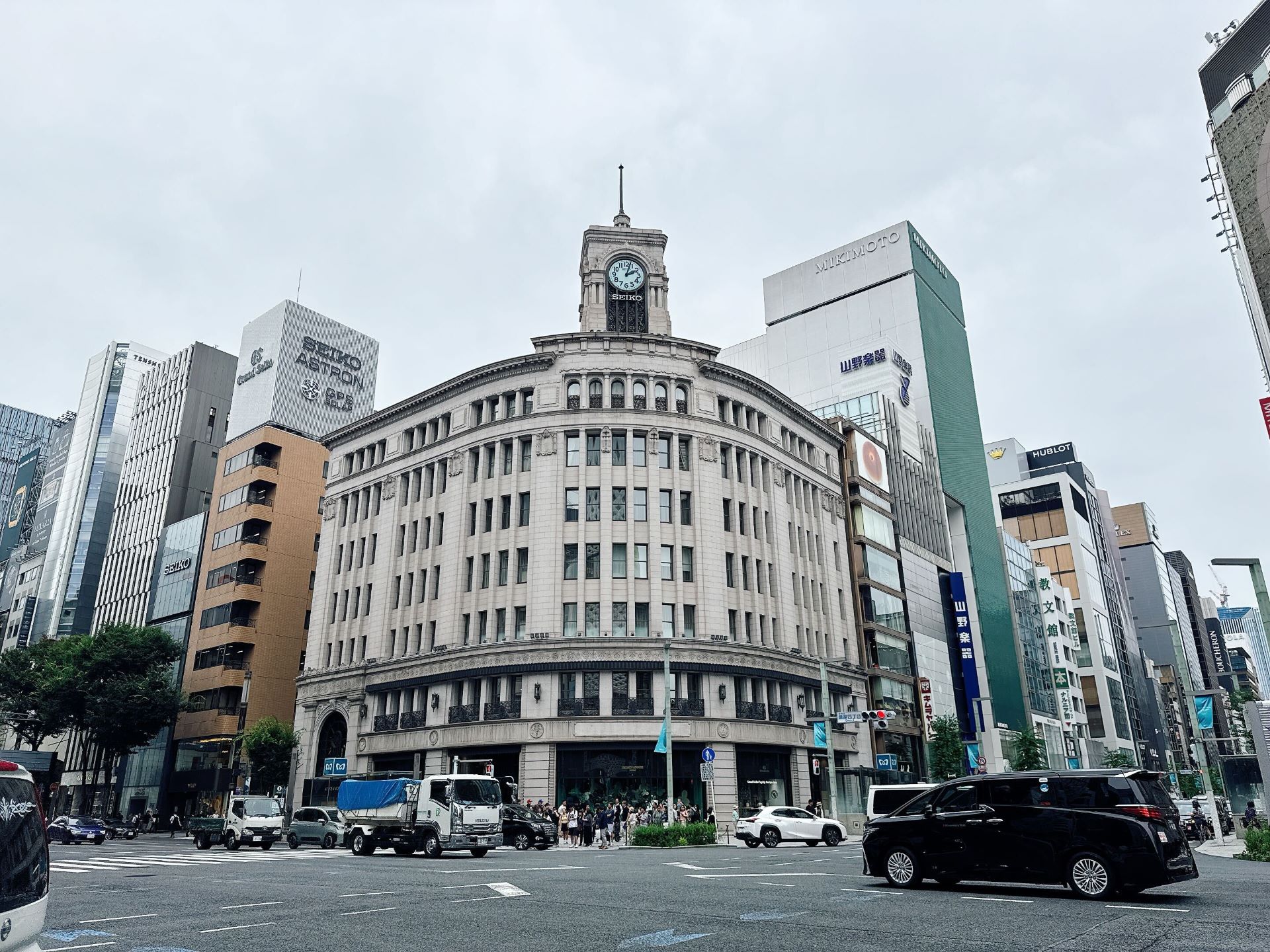
Ginza is Tokyo’s classic luxury powerhouse. If you’re looking for flagship stores, legacy department stores, and a clean, elegant atmosphere, this is where you’ll find it.
- Flagship Stores: Global luxury brands dominate the main avenues. Chanel, Dior, Hermès, Louis Vuitton, and Bulgari all operate large, multi-story boutiques. Many are housed in architecturally distinctive buildings that blur the line between retail and art.
- Department Stores: Longstanding names like Mitsukoshi, Wako, and Matsuya Ginza anchor the district. They carry everything from haute couture to high-end cosmetics and accessories. Wako, in particular, is worth visiting even just to admire the clock tower, probably the area’s most iconic landmark. It reopened in 2022 as Seiko House Ginza, staying true to its traditional charm.
- Ginza Six: The largest shopping complex in the area, recently revamped in spring 2025. It features luxury brands like Kenzo, Jil Sander, and Alexander Wang alongside reputable classic brands, as well as art installations, a rooftop garden, and concierge services aimed at international visitors.
- Price Range: Expect most shops here to cater to upper-tier budgets. However, the quality, exclusivity, and shopping environment reflect the investment.
- Best For: Fashion traditionalists, luxury shoppers, and anyone interested in high-end Japanese craftsmanship or landmark shopping architecture.
See also: Ginza Shopping Guide: 24 Best Shops in Ginza
Hidden Gems in Ginza
Beyond the big names, Ginza rewards those who wander a few blocks off the main avenue. Here are standout lesser-known shops with a distinct identity:
- Dover Street Market Ginza: Rei Kawakubo’s Ginza branch of her concept store for Comme des Garçons fans and fashion radicals. Expect an ever-changing, gallery-like setup with curated selections from high-concept designers.
- Fujimaki Hyakkaten: A high-end select shop inside Tokyu Plaza Ginza, spotlighting Japanese artisans and creators. Think rare ceramics, handmade textiles, and small-batch accessories with style and soul.
- Itoya: While hardly a hidden gem for locals, this treasure trove often flies under the radar among visitors from abroad. But this is a must-visit for those with an eye for design. The building boasts twelve floors of designer stationery, art supplies, and Japanese paper, all in the most stylish presentation.
- Sot Ginza: A stylish leather brand showcasing the best of Japanese materials and craftsmanship, with a wide selection of items, going from wallets or handbags to one-of-a-kind fashion accessories.
- Takumi: Near Yurakucho, this quiet shop specializes in Mingei folk crafts from across Japan. Less fashion-focused, but perfect for style-conscious travelers interested in material quality, traditional accessories, and timeless aesthetics.
Omotesando: Youthful, Trend-Driven, and Design-Forward
Omotesando takes a different approach to luxury. Yes, it’s home to global brands like Gucci, Loewe, and Louis Vuitton, but it mixes that with high-concept architecture and a creative subculture that flows into adjacent Harajuku.
- Vanguardist Spots: Omotesando Avenue is lined with flagship stores housed in some of Tokyo’s most striking buildings. Tadao Ando’s Omotesando Hills, SANAA’s Dior Tokyo Omotesando, and Toyo Ito’s Tod’s building in the nearby Meiji Dori, turn window shopping into another form of design appreciation.
- Department Stores and Multi-Brand Spaces: Complexes like GYRE, Omotesando Hills, and the landscaped retail spaces created by the Tokyu Plaza locations at the intersection of Omotesando Avenue and Meiji Dori (Harakado and Omokado, short for Harajuku corner and Omotesando corner, respectively) bring together the best of fashion, art, and lifestyle with a more curated, modern edge.
- Streetwear and Designer Casual: Labels like Comme des Garçons, BAPE, and UNDERCOVER thrive here, catering to younger and more experimental shoppers.
- Price Range: Omotesando spans a broader budget range. Flagships and concept boutiques skew high-end, but vintage and resale shops offer accessible ways into top-tier fashion.
- Best For: Those who follow trends, love Japanese designers, or want to shop in buildings that double as architectural landmarks.
Backstreets of Omotesando and Cat Street
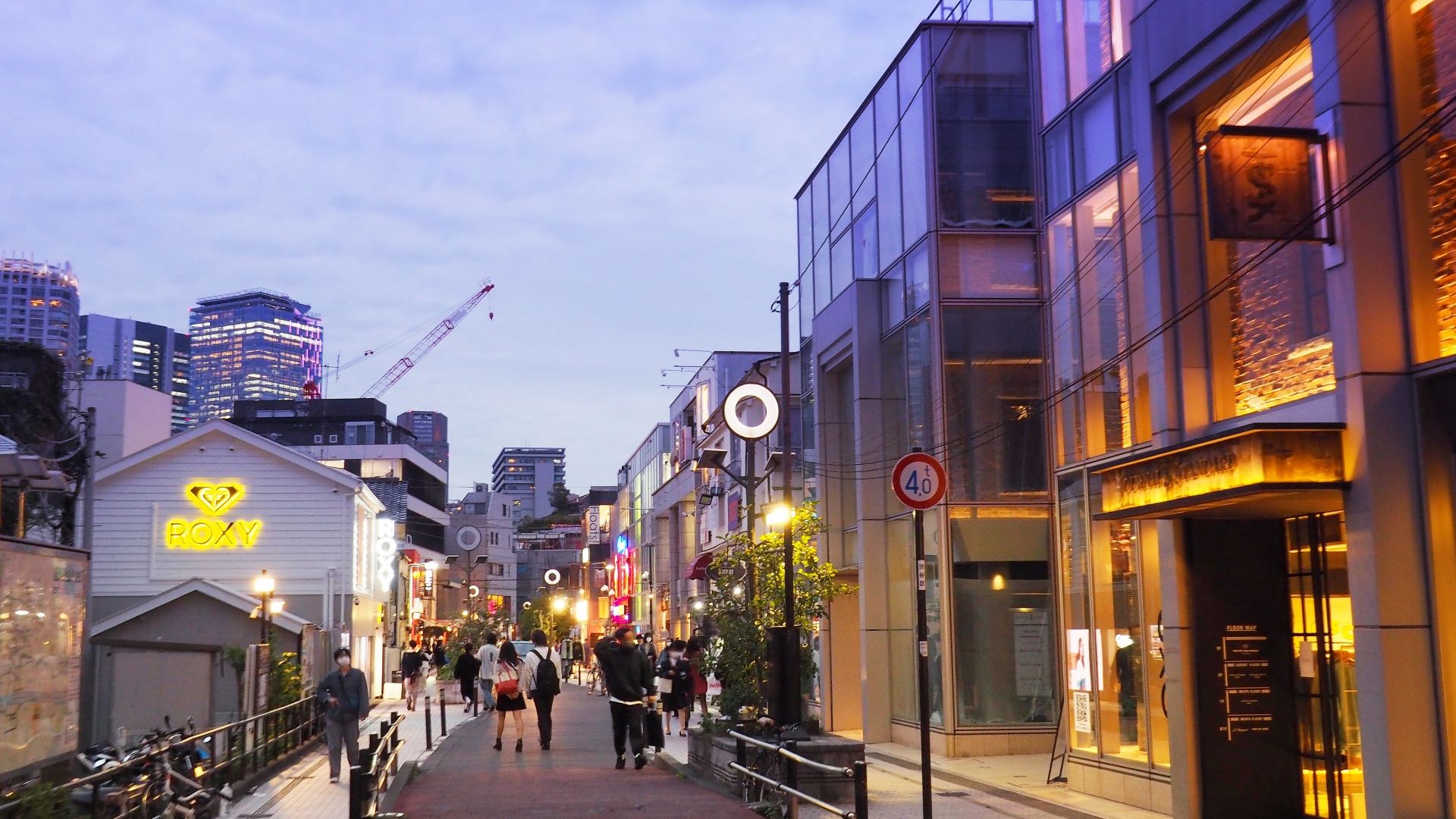
The real character of Omotesando unfolds in the lanes and alleys behind its sleek facade. Here’s where vintage, resale, and youth culture take the lead:
- RAGTAG: A secondhand designer boutique in Cat Street with a cult following. You’ll find gently worn pieces from Issey Miyake, Yohji Yamamoto, and more, at far less than retail.
- AMORE Vintage: A destination for vintage Chanel, Hermès, and Louis Vuitton. Two dedicated branches, one in Omotesando and another in Aoyama, offer museum-quality finds with opulent interiors and service to match.
- VINTAGE QOO TOKYO Omotesando: A stylish, chandelier-lit space filled with rare designer goods and limited editions. Perfect for shoppers who love fashion history.
- ALLU Omotesando: A multi-floor boutique dedicated to ultra-luxury vintage like Birkins, Rolexes, and more. The space feels more like a lounge than a store.
Style and Atmosphere: Which Vibe Suits You Best?
Ginza Atmosphere
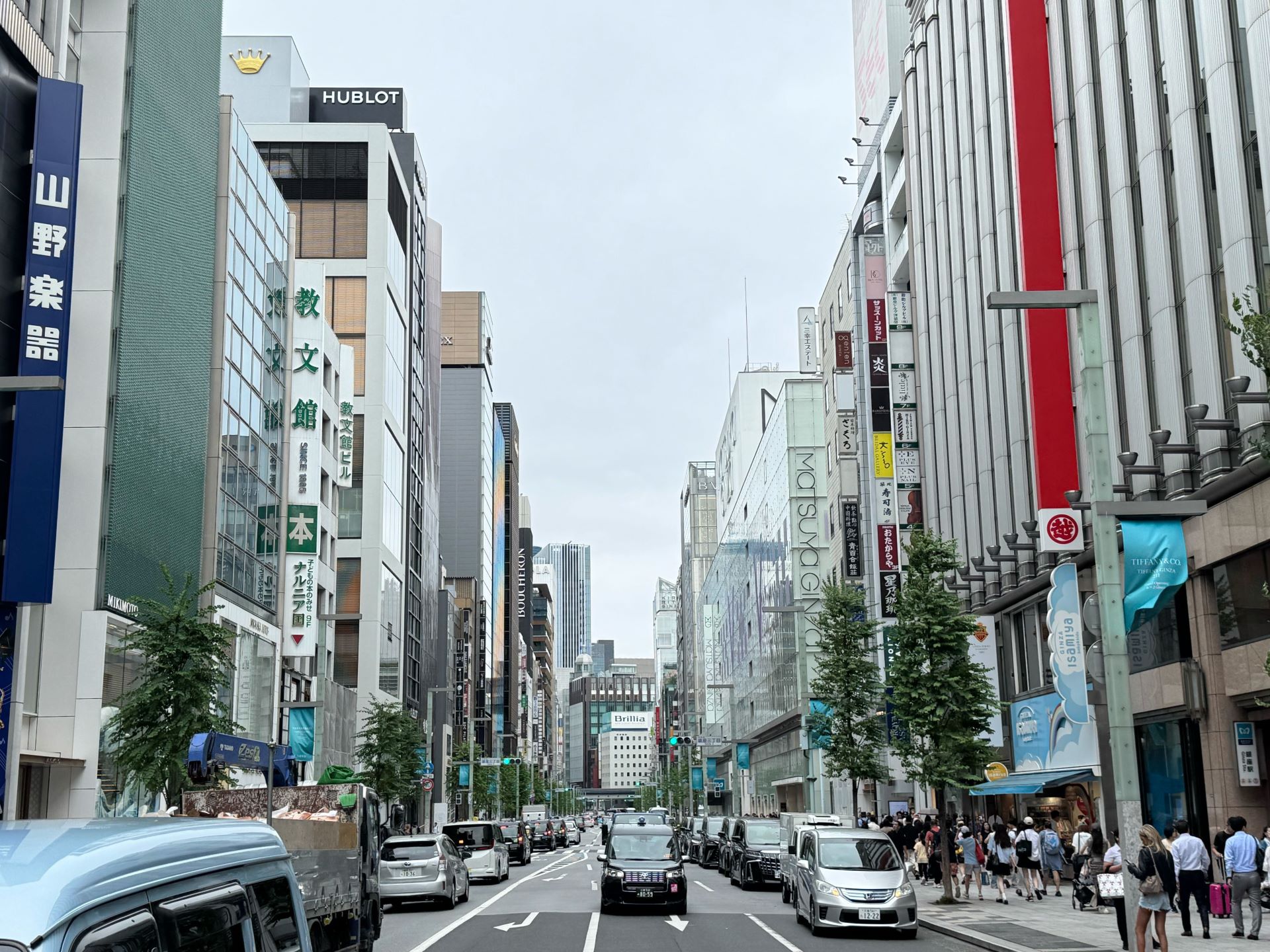
- Polished, Elegant, and Understated: Ginza leans into luxury with a kind of quiet confidence. Wide sidewalks, gleaming façades, and a calm rhythm to pedestrian traffic define the area. Think: white gloves, clean lines, and nothing out of place.
- Professional Crowd: The area serves Tokyo’s business elite and mature shoppers. Expect to see sharply dressed office workers, local style veterans, and high-income tourists moving at a measured pace.
- Evening Energy: After 6 p.m., Ginza gets quieter, especially on weekdays. Stores close earlier than in trendier districts, and the nightlife scene skews toward fine dining and upscale bars, not youth culture.
- Visual Style: The district itself is an impressive balancing act between architectural restraint with nods to modernist or neoclassical styles, and some of the most impressive and eye-catching samples of contemporary architecture. Luxury brands make some of their most eloquent statements through their Ginza locations.
- Great For: Visitors who value order, elegance, and a more intentional shopping experience.
Omotesando Atmosphere
- Youthful, Creative, and Energetic: Omotesando’s energy comes from its collision of designer polish and experimental style. While the avenue itself is tree-lined and almost Parisian in layout, the surrounding backstreets buzz with students, stylists, and tourists snapping photos outside concept shops.
- Mixed Crowd: You’ll see everything from art school students in wide-legged Yohji pants to international influencers scouting content. It’s younger, looser, and far more experimental than Ginza.
- All-Day Movement: Omotesando stays lively late into the afternoon and early evening. Shops close later, and many cafés double as informal hangouts, so you can think of the area as a place to linger, rather than to power through.
- Visual Style: Architecture is bold, expressive, and experimental: think of curves, mirrored glass, dramatic angles, and mixed spaces. Then there’s Cat Street, which bleeds into Harajuku, feeling more like a curated street market than a formal district.
- Great For: Travelers who want design-forward environments, creative street fashion, and the freedom to explore without a fixed destination.
Dining and Cafés: Where to Recharge Between Shops
Ginza and Omotesando are famous shopping spots, but they’re also prime spots to slow down, caffeinate, and recalibrate between stops. While Ginza leans toward refined patisseries and storied cafés with a legacy, Omotesando excels in design-forward coffee houses and bakery hybrids catering to a more experimental, trend-sensitive crowd. Each district provides thoughtful respites that reflect its fashion identity: one polished and classic, the other vibrant and progressive.
Ginza Eats, Classy and Timeless
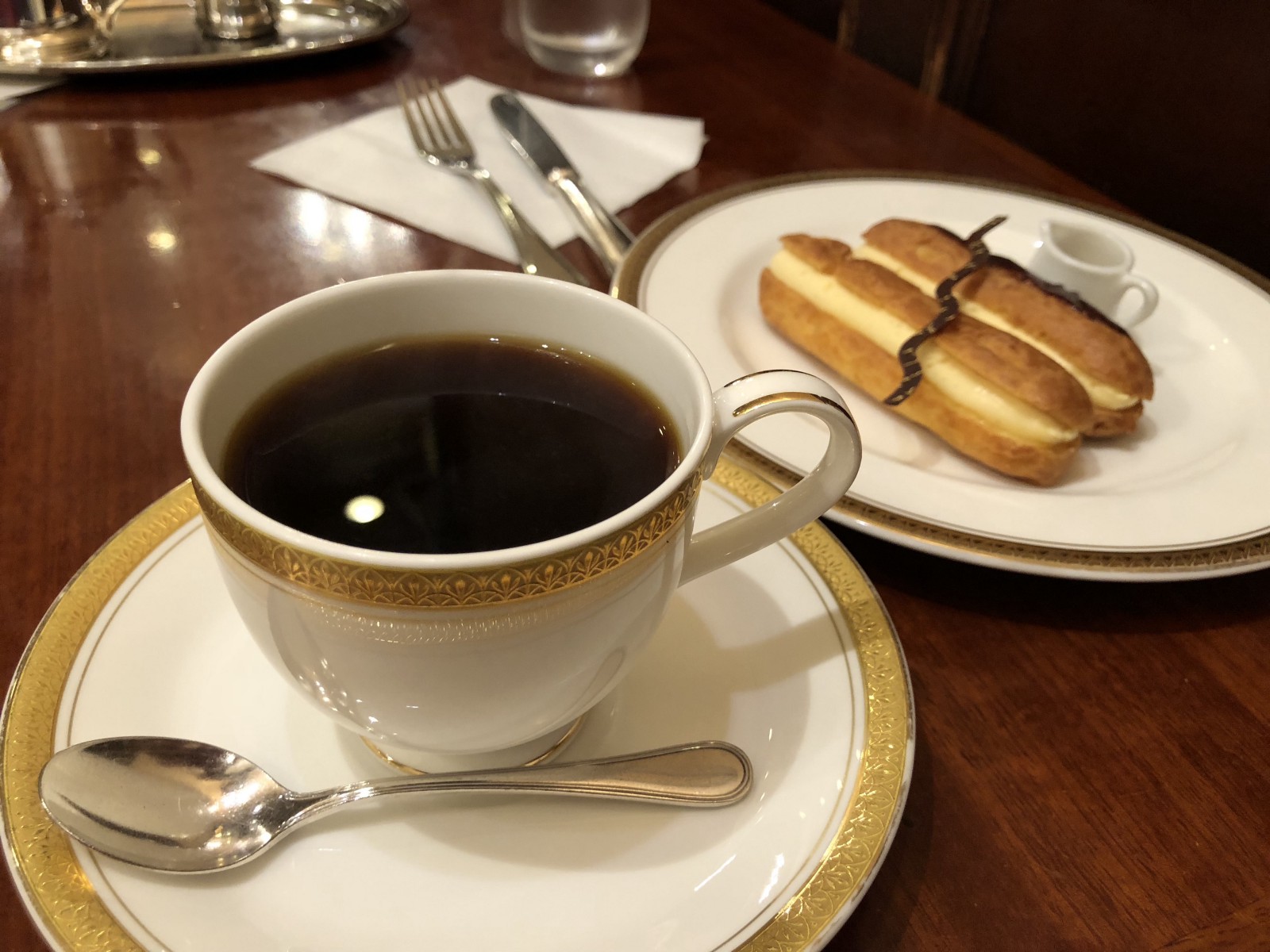
Upscale Patisseries and Sushi Counters
Start with Ginza’s two extremes of Japanese indulgence: precision-crafted pastries and top-tier sushi. Inside Ginza Mitsukoshi and Matsuya’s depachika (basement food halls), you’ll find luxury sweets by the likes of Pierre Hermé, Jean-Paul Hévin, or Japanese masters like Toraya. Ginza Six also hosts a sleek selection of high-end dessert boutiques.
For something savory, Ginza is one of Tokyo’s core sushi destinations. Sukiyabashi Jiro may have global fame, but there are many more excellent options like Kyubey or Harutaka, both revered for their Edomae-style omakase. Expect minimalist interiors, hushed counter seating, and a deep reverence for seasonal craftsmanship.
Don’t miss our 11 Best Sushi in Ginza: from Kyubey to Sukiyabashi Jiro!
Classic Cafés with a Legacy
For a taste of Ginza’s Showa-era charm, stop by one of its historic kissaten. Café Paulista, open since 1911, has hosted everyone from literary icons to postwar intellectuals. Its dark leather banquettes and chandelier lighting feel untouched by time. Ginza Tricolore, founded in 1936, is one of the district’s oldest mainstays with a top-quality coffee offering. Another landmark, Ginza West, founded in 1947, still serves Viennese-style coffee and fresh cream cakes in a quiet setting with classical music playing softly in the background. Café de l’Ambre, a coffee purist’s dream, roasts its beans on-site and serves only coffee, no food. The shop’s dim lighting, narrow U-shaped counter, and postwar aesthetic feel frozen in time. It’s not unusual to find solo patrons reading quietly for hours.
Omotesando Cafés, at the Forefront of Trends
Trendy Coffee Shops and Bakery Hybrids
In Omotesando, the café landscape skews experimental. Shops here often combine high-concept design with ambitious menus. Higuma Doughnuts × Coffee Wrights, for instance, serves airy, handmade doughnuts alongside pour-over coffee in a naturally lit space with blonde wood fixtures. Bread, Espresso &, a neighborhood favorite, offers house-baked breads with robust espresso and its French toasts are quite popular among its patrons.
As for aesthetics, if you’re looking for designed to be photographed, look no further than &t Café, tucked into a residential alley and featuring a minimalist white-and-wood interior accented with tropical plants, perfect for a quiet break or a polished Instagram story.
Vegan and Specialty Diet Options
Omotesando is also a hotspot for health-conscious cafés. Mr. Farmer offers a fully plant-based menu, from kale quinoa bowls to coconut milk lattes, all served in a bright, greenhouse-style space. You’ll also find spots like Fico & Pomum Smoothie Cafe (fruit smoothies and plant-based milk shakes) or Sincere Garden Cafe (creative vegan cuisine) just a short walk from each other.
Check more recommendations here: Cool Cafes in Omotesando Area, Tokyo
Location and Access
Navigating Tokyo can be intimidating for first-time visitors, but both Ginza and Omotesando are among the city’s most accessible and tourist-friendly areas:
Getting to Ginza
Ginza Station is serviced by three major Tokyo Metro lines: the Ginza Line, Hibiya Line, and Marunouchi Line. Yurakucho Station (JR Yamanote Line) is just a five-minute walk away, making Ginza easy to reach from virtually anywhere in central Tokyo.
From Tokyo Station, it’s a direct 3-minute ride on the Marunouchi Line. From Haneda Airport, expect a 30–40 minute trip via the Keikyu Line and a transfer at Shinagawa or Daimon.
Once in the area, it’s easy to see that it’s designed for straightforward movement. Sidewalks are wide and well-maintained. Major department stores and flagships are lined up along Chuo-dori, a broad avenue that closes to vehicles on weekends to become a pedestrian paradise. Elevators and escalators are plentiful, and signage is multilingual (Japanese, English, Chinese, Korean).
Getting to Omotesando
Omotesando Station is served by the Ginza Line, Chiyoda Line, and Hanzomon Line. For JR users, Harajuku Station (Yamanote Line) is about 10 minutes on foot via Meiji-dori or through the backstreets of Cat Street.
The location is particularly convenient if you’re already near Shibuya, Aoyama, or Ebisu. From Shibuya Station, it’s a 2-minute hop on the Ginza Line, or a 15-minute walk straight up Cat Street.
Unlike Ginza, Omotesando is not built on a strict grid. The main avenue is broad and tree-lined, but many of the best boutiques and cafés are hidden in narrow lanes or tucked behind concept buildings. Expect a bit of zig-zagging. The area is compact but layered, with split-level shops and stairs being common. Signage is less consistent than in Ginza, though English is still widely used.
Final Verdict and Recommendations
Both Ginza and Omotesando represent Tokyo at its most stylish, but they do so in distinct ways. Choosing between them isn’t really a matter of deciding which one is “better”, but which one better aligns with your fashion taste, energy level, time budget, and preferred shopping style.
When to Choose Ginza
- You’re looking for flagship luxury brands and department stores under one roof
- You value elegance, wide streets, and quieter atmospheres
- You’re interested in architecture and postwar-modernist design
- You want a high-end sushi or dessert experience in between shops
- You appreciate organized city layouts and easier navigation
Best for:
Luxury travelers, design and architecture enthusiasts, visitors with limited time who want a curated, walkable shopping experience.
Not ideal for:
Those seeking emerging Japanese streetwear, younger crowds, or casual browsing on a smaller budget.
When to Choose Omotesando
- You’re into trend-spotting, experimental fashion, and local designer boutiques
- You enjoy discovering shops tucked into backstreets and concept buildings
- You like being close to Harajuku and Cat Street for youth fashion culture
- You’re after a lively café culture with design-forward interiors
- You’re flexible with navigation and open to walking non-linear routes
Best for:
Fashion-conscious travelers looking to mix big names with niche Japanese labels, café hoppers, and streetwear fans.
Not ideal for:
Those who prefer a centralized, all-in-one shopping environment or dislike searching for hidden stores.
TL;DR: Quick Takeaways for Travelers
| If You Value… | Head to… |
| Flagship luxury fashion | Ginza |
| Independent designer brands | Omotesando |
| Easy navigation and layout | Ginza |
| Youthful, curated streetwear | Omotesando |
| Quiet cafés and upscale sweets | Ginza |
| Trendy interiors and vegan cafés | Omotesando |
| Architecture and urban design | Both (Ginza for modernist icons, Omotesando for starchitects like Herzog & de Meuron) |
| One-stop shopping | Ginza |
| Discovery-based browsing | Omotesando |
In short: If you’re pressed for time and want a polished, luxury-heavy day out, Ginza delivers a smooth, curated experience. If you’re willing to explore and want to discover what Tokyo’s trendsetters are wearing and drinking, Omotesando is worth the detour.
Either way, pack comfortable shoes. Your most stylish pair, of course.
Interested in Fashion? Don’t miss these articles:
Written by
Photographer, journalist, and avid urban cyclist, making sense of Japan since 2017. I was born in Caracas and lived for 14 years in Barcelona before moving to Tokyo. Currently working towards my goal of visiting every prefecture in Japan, I hope to share with readers the everlasting joy of discovery and the neverending urge to keep exploring.





